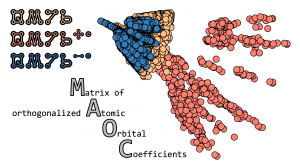New representation for chemical machine learning

Stiv‘s quantum-inspired representation for chemical machine learning entitled matrix of orthogonalised atomic orbital coefficients (MAOC) is published in the Special Collection of J. Chem. Phys. on “Machine Learning Hits Molecular Simulations” and highlighted on Kudos. MAOC can represent molecules with (nearly) identical geometries but distinct charges and spin multiplicities, and can be applied to atoms, molecules, and periodic systems. Read the paper open-access here, and check Stiv’s detailed tutorial on using MAOC on our GitHub.
About HITS
HITS, the Heidelberg Institute for Theoretical Studies, was established in 2010 by physicist and SAP co-founder Klaus Tschira (1940-2015) and the Klaus Tschira Foundation as a private, non-profit research institute. HITS conducts basic research in the natural, mathematical, and computer sciences. Major research directions include complex simulations across scales, making sense of data, and enabling science via computational research. Application areas range from molecular biology to astrophysics. An essential characteristic of the Institute is interdisciplinarity, implemented in numerous cross-group and cross-disciplinary projects. The base funding of HITS is provided by the Klaus Tschira Foundation.